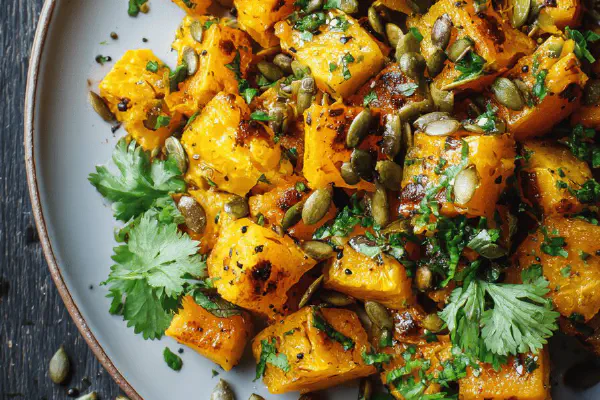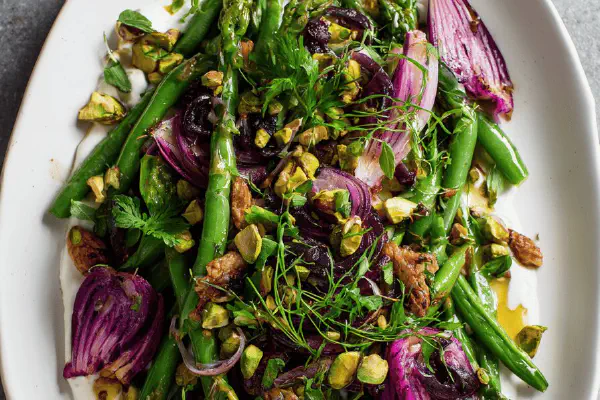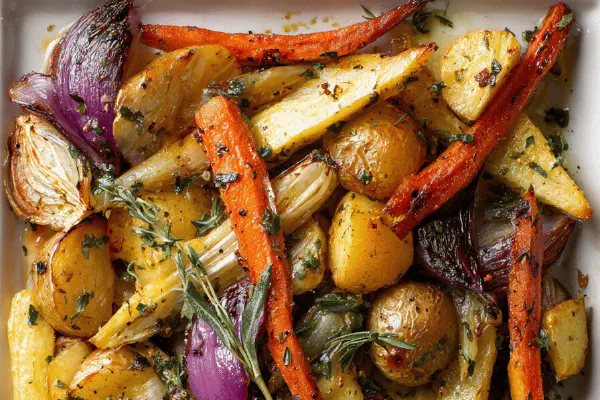Featured Recipe
Spiced Tofu Ratatouille

By Kate
"
A lively plant-based ratatouille with firm tofu replacing the classic eggplant, combined with vibrant bell peppers, zucchini and fresh herbs. Flavors bloom slowly in olive oil, building depth with white wine and gentle chili heat. A versatile dish, gluten-free and free of common allergens, adaptable to many meal contexts.
"
Prep:
25 min
Cook:
35 min
Total:
60 min
Serves:
4 servings
vegan
gluten-free
French-inspired
vegetarian
Introduction
Forget standard ratatouille tanks with soggy eggplants and bland tofu tossed carelessly. Here’s a method that respects produce texture and tofu integrity by pressing tofu extra firm, allowing it to hold shape under heat, building a crust that resists disintegration. Slow sweats coax out sweetness from peppers and shallots. Garlic and chili flakes punch through quietly, layered rather than loud. Using shallot over onion adds a mellower bite, while pressed tofu stands sturdy as vegetable juices bubble and thicken around it. Fresh herbs finish with perfume and brightness, and optional smoky paprika offers a subtle unexpected note. This approach saves time without sacrificing depth; stick to visual and aromatic clues to time your moves perfectly.
Ingredients
About the ingredients
Bell peppers bring sweetness but can vary in water content; choose firm, dense ones. Shallots add a subtle complexity many skip in favor of onions; try to keep garlic minced fine for even dispersal of flavor without burnt edges. Crushed red chili flakes are a heat variable—omit or reduce to taste. Extra firm tofu is key here—press well for 30 minutes, or freeze-thaw combo to improve texture, then squeeze out excess water just before cooking to prevent sogginess—no tofu water diluted sauce please. Adding smoked paprika is an optional twist best added near the end; it introduces a mild warmth not from chili but from smoke, balancing sweetness. Substitutes: white wine is versatile, but add a dash of lemon juice plus broth as emergency swap; avoid watery substitutions. Olive oil is preferable for its flavor and high heat point but avocado oil works fine. For herbs, dry thyme or flat-leaf parsley can replace fresh if unavailable but increase quantities carefully to avoid bitterness.
Method
Technique Tips
Precision with heat control prevents wet mush or burnt edges. Start on medium-high only to sear vegetables initially, lower if oil smokes or ingredients stick. Constant stirring when sweating prevents sticking but pause to allow light browning for complexity. Timing the tofu step is critical: too soon in the pan and water released will dampen skillet; wait until oil is fragrant and veggies softened. Turning tofu regularly encourages crust on all sides. Deglazing with wine scrapes flavorful browned bits—don’t skip unless you want flat, one-note sauce. Tomatoes must break down gently—don’t rush, or risk uneven cooking. Adding zucchini last retains its integrity. Cook until just tender. Herbs fold in last, cooking them too long dulls vibrancy. Remember salt early to draw flavors from veggies but adjust at end for balance since tofu absorbs salt differently. Cooling slightly before serving allows flavors to settle. Serve over grains or rustic bread to soak up juices; a fresh green salad balances richness.
Chef's Notes
- 💡 Choosing bell peppers? Go for firm ones. The riper, the sweeter. Vary colors; they add visual interest. When cutting, watch for those watery varieties. Thicker walls add crunch.
- 💡 Timing is key while sweating veggies. Gently draw out sweetness. Listen for sizzling; adjust heat if you hear too much. Aroma is your guide. Sweating releases the moisture you need.
- 💡 Tofu pressing matters. It holds shape better. Freeze, then thaw for a firmer texture. Drain thoroughly to avoid adding water. It should be dry before it hits the pan. Otherwise, it becomes mushy.
- 💡 Smoked paprika offers a nice twist. Add it near the end. Too early? It loses flavor. Lastly, it balances sweetness from vegetables. Great for adding depth.
- 💡 Sauces need patience. Don’t rush tomatoes; they must break down slowly. Stir occasionally but let them cook. A thick base holds everything together. Taste frequently, adjust seasoning as needed.
Kitchen Wisdom
What if tofu sticks?
Lower heat slightly. Add oil if needed. Wait until veggies soften before adding tofu. Crust forms when left alone; it needs searing.
Can I substitute wine?
Use broth and a dash of lemon juice. Add acidity; balance is key. It enhances the flavors without overwhelming. This works in a pinch.
How to store leftovers?
Store in an airtight container. Keep it in the fridge for up to three days. Reheat but avoid overcooking; it'll change texture. Fresh is best.
How to recover overcooked zucchini?
Add a splash of water when reheating. This introduces moisture. Consider tossing with fresh herbs too; refreshes flavor and texture.



